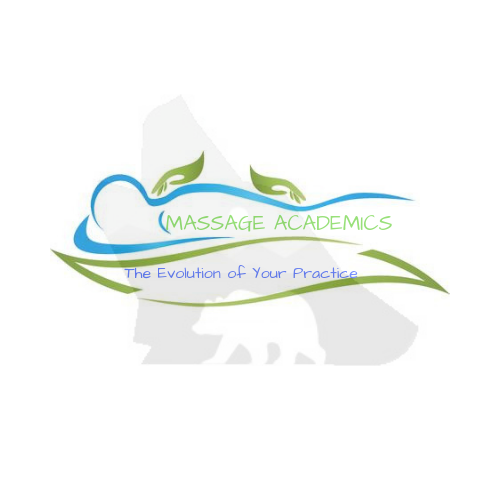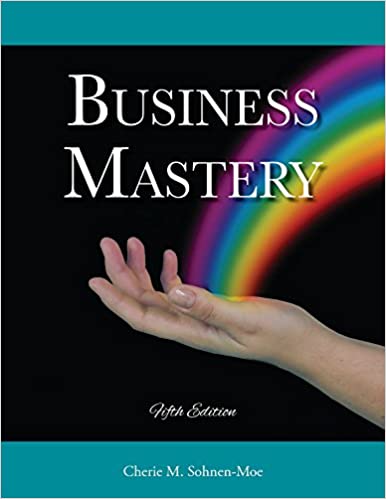As you work to make your career dreams a reality, Section 1 of Business Mastery explores how to set a strong foundation. It prepares you to decide your career based on a clear sense of who you are and what you want to accomplish.
Chapter 1 looks at ways to increase your self-awareness and make self-knowledge a powerful ally for the work ahead of you. This chapter mainly consists of activities to help you assess your current state, identify your strengths and challenges, and clarify your values. The chapter finishes with an exploration of your ideal future.
Chapter 2 helps you transform the insights you gained from Chapter 1 into the activities of goal setting, strategic planning, and follow-through. These three key activities form the common denominator among successful people in all fields. This chapter assists you in developing a mission statement and goals—and translating them into actions vital to your business’s daily, weekly, and monthly growth. We then look at how savvy business people use strategic planning to create a roadmap to success.
Chapter 3 helps you define what success means to you and supports you in a fearless examination of roadblocks that may stand in your way. You’ll also find tips on how successful people manage their time, track results, and handle risks wisely.
Chapter 4 looks at how to ensure that your career lasts for the long term and grows as you do. It identifies time-tested ways to enhance career longevity and avoid burnout. The chapter also explores ways to develop a strong support system to help you stay on track and true to your vision.
In Section 2 of Business Mastery, the theme of intentional excellence takes center stage. Intentional excellence requires unflinching honesty and courage, and it results from making your integrity central to whatever you do. It’s the result of the consistent and conscious effort made visible in the behaviors, interactions, and relationships you establish within your practice.
Chapter 5 focuses on measures of excellence that are different from markers of success like client numbers and bank balances. We start with a look at professional ethics, which exist not to catch people in wrongdoing but to guide practitioners toward greatness and present guidelines for recognizing ethical dilemmas and resolving them. This discussion flows naturally into the key role that a professional image plays in building a successful practice. The last two topics of the chapter consider how goodwill and social responsibility bring excellence into
your practice—as you share your talents, time, and resources to support the causes closest to your heart.
Chapter 6 discusses why good communication skills are essential in business and highlights ways to fine-tune key skills, such as active listening and reflective feedback. It looks at the power of first impressions and rapport building, as well as several common barriers to effective communication. It includes useful tips on how to handle the inevitable conflicts and difficult situations that are part of professional life. This chapter also offers practical insights into how to conduct effective client interviews. Excellent recordkeeping is another aspect of good communication, so we discuss SOAP and Wellness formats for documenting client sessions and charting progress. You will also find a wealth of practical tips and resources to develop excellent communication skills and use technology appropriately.
Section 3 of Business Mastery provides an insider’s look into career opportunities in the wellness field. This section provides an overview of wellness career trends and information to help you determine if working as an employee or being self-employed is the best option for you. You’ll also gain valuable insights into different work environments so that you can approach your career choices with credibility and confidence.
Chapter 7 starts with a statistical review of complementary and alternative healthcare usage and then follows up with an overview of the trends in wellness careers. It discusses why career focus is essential and the steps involved in clarifying that focus. The topics of employment, self-employment, and independent contractor status are explored, including the pros and cons of each choice. The chapter wraps up with an activity to assist you in defining your ideal career.
Chapter 8 provides you with insights into working in spas and salons, whether you are an employee or an independent contractor. It highlights what you can expect to find in these environments, such as the corporate culture, training requirements, scheduling concerns, and seniority issues. It also includes success tips for each of the most common types of spas.
Primary healthcare settings offer a variety of CAM services on both an inpatient and outpatient basis. This translates into a growing number of career placement opportunities.
Chapter 9 focuses on what to expect when working in primary healthcare settings and provides suggestions to enhance your experience in this environment.
Chapter 10 explores the advantages and disadvantages of group practices. It examines the key aspects of this option and includes overall tips for success in group practice. The chapter then identifies specific concerns and success strategies for working in a wellness center or a specialty center.
The majority of practitioners work at least part-time as sole proprietors. Chapter 11 takes an in-depth look at the challenges and opportunities with private practice options, such as working in a home office, commercial office space, primary care provider’s office, fitness center, or on an outcall basis.
Section 4 of Business Mastery provides information on how to find and keep a job. Even if you plan on being an independent practitioner, you never know when you might want to work as an employee, even if it’s just on a temporary or part-time basis.
Chapter 12 covers the fundamental aspects of employment. The chapter begins with a section on career success secrets and then describes how to find potential employers, research companies and hone your interviewing skills.
Successful job seekers assemble an employment kit with all of the items needed to help procure an interview and get hired. Chapter 13 reviews the key items to put in that kit and focuses on how to write a top-notch résumé and accompanying cover letter.
Chapter 14 reviews how to effectively navigate employment contracts and, when the time is right, renegotiate terms (e.g., a raise, booking seniority, benefits, advancement). The chapter concludes by covering ways to excel in a performance review.
Studies show that most business failures are due to improper management or undercapitalization, not because the owners were underskilled in the performance of their job duties.
Section 5 of Business Mastery provides the necessary groundwork for a business to grow and prosper. It encourages you to take the time to master the basic business fundamentals so you can maximize your chance of success and owners.
Chapter 15 looks at the critical elements involved in a business start-up. It covers how to assess the feasibility of your business idea, find start-up financing, determine the laws and regulations you must follow, choose a business name, and determine client fee structures. The chapter closes with exploring the option of buying a practice.
Choosing an appropriate business location can dramatically impact your success. Chapter 16 covers the essential elements to consider when looking for a location, negotiating a fair lease, and navigating zoning, insurance, and licensing regulations. It also explores how to design the interior office space. For practitioners on the move, the chapter closes by discussing how to manage the relocation of your practice, near or far.
Avoid common pitfalls that plague many small businesses.
Finally, Chapter 17 provides detailed instructions for creating your business plan—an indispensable tool for mastering both short- and long-term success. The chapter details the significant components of a business plan, including creating a financial forecast to realistically assess the finances required to launch and maintain your business. We also include a guide of additional tips and valuable resources to help you create a solid business plan.
Section 6 of Business Mastery focuses on the nuts and bolts of business operations, including tips and information to help you run your business smoothly and efficiently and how to transition it. While much of the information in this section is geared toward self-employed practitioners, some of the topics are key to all practitioners.
Even if you plan to be an employee, this information helps you understand what’s involved in establishing a business and the costs of running it, thus giving you a better appreciation of what an employer offers. This knowledge is also crucial if you plan on moving into management.
Chapter 18 focuses on office management. We start with policies. Although not many people thrill at the thought of developing policies and procedures, this chapter shows how they’re like the frame of a house—a necessary part of building a house that lasts and a business that thrives. You’ll find tips on how to write policies and procedures, organize your office, and make smart technology choices.
Chapter 19 examines the aspects of actually managing a practice, including complying with HIPAA regulations and handling insurance reimbursement. Also included are valuable insights into contract basics, effective negotiation, and conflict resolution.
Chapter 20 presents the essentials of financial management. It provides concrete information to help you keep the books, prepare financial reports, and understand tax laws. You’ll also learn how to use barter to exchange goods and services with others. Finally, the chapter covers the basics of retirement planning and offers several helpful resources to assist you in planning for your future financial stability.
Product sales are an excellent diversification method, and the profits boost your bottom line while serving your clients. Additionally, many employees are required to sell products. Chapter 21 explores how to sell products ethically. It covers how to choose appropriate products, provides ideas on selling and marketing products, and closes with tips on effective displays.
For growing practices, Chapter 22 provides insights into when and how to hire support or professional staff. It also explores the characteristics of a good employer, examines the regulations regarding employees and independent contractors, and guides you on managing your team successfully.
Chapter 23 guides you in consideration of transitioning your practice. It starts by highlighting major decision-making pinnacles and discusses exploration and evaluation techniques. The first option covers the variety of ways you can transfer or sell your practice and provides a step-by-step process to achieve the best outcome possible. The chapter concludes with a checklist for closing your practice, including steps to take before closing and after the official closing.
Section 7 of Business Mastery explores how to master the marketing tasks that are essential to your success. Successful practitioners know who they want to work with, understand how to find those potential clients through appropriate marketing techniques, and attract the desired clients by clearly and engagingly describing what they do.
Practitioners maintain a thriving practice by being client-centered:
- Having an inviting treatment space
- Using high-quality equipment
- Conducting thorough treatment plans
- Following up, and, most importantly
- Listening and responding to each client’s unique needs
What’s the best way to begin? Like building a house, it’s wise to start with a foundation and build from there.
Chapter 24 provides that foundation by detailing how to identify your target markets, develop a marketing plan, and take action steps to attract new clients and build a thriving practice. The chapter also introduces a virtual toolbox of marketing concepts, such as positioning, branding, and differential advantage, along with valuable insights into how you can put them to work to grow your business.
The majority of marketing endeavors that practitioners utilize fall under the categories of promotions and community relations. Chapter 25 provides the framework for a solid house by giving a primer of low- and no-cost marketing techniques focusing on promotions and community relations.
Chapter 26 is analogous to the furniture in the house. This chapter highlights the primary marketing materials you need, along with tips on how to design and incorporate them.
Maintaining an effective online presence is like providing the power to run your house. Chapter 27 explores the critical elements of designing an effective website and engaging with your community through social media and other online activities. Think about advertising techniques as a sign on your front yard inviting people in.
Chapter 28 highlights the significant print and broadcast media advertising venues. It also includes tips on content and design of display ads, with before-and-after examples.
Chapter 29 helps you to navigate the media and get them to knock on your door. It covers how to develop media relations, the steps involved in getting interviewed, how to write a press release, and the key elements in media kits.
Chapter 30 rounds out the house design by focusing on creative ways to retain clients. It explores how exceptional customer service and incentive programs foster long-term client relationships and how you can put customer service action plans to work to enhance your business success.








Recent Comments